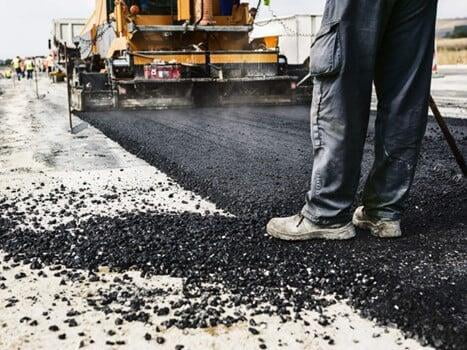An historic substance that was used in roading up until the 1980s, coal tar contains high levels of harmful chemicals, but in New Zealand there is no standard guide on how to deal with it. A WasteMINZ working group is looking to change that. Waka Kotahi’s Stephen Gardner explains.
Read this article in Revolve magazine
The WasteMINZ coal tar in roading working group will soon consult on the Coal Tar in Roading Guidance, a document which aims to provide information on how to identify, sample and manage coal tar in roading.
Coal tar was produced as a by-product of gasification in several gasworks around the country. It has strong adhesive and waterproof properties which made it an excellent binder for chip sealing roads and pavements. It was used up until the 1970s and in some areas such as Christchurch until the 1980s. Compared to bitumen, coal tar in roading contains high levels of polycyclic aromatic hydrocarbons (PAHs) which can cause harm to human health, particularly from the inhalation of fumes. Ecological receptors in waterways can also be impacted from run-off from coal tar roading.
A thorough literature review on other applicable international guidelines or standards that could be applied to the New Zealand context identified that approaches to coal tar management and disposal differed across a variety of countries, and that there was no standard approach to dealing with it.
In New Zealand, industry and key stakeholders identified gaps in knowledge about coal tar, and very little information about where and when material was used in roads across the country.
The coal tar in roading working group was established in 2021 and is developing the guidance, which will aim to provide a high-level overview of:
- the history of coal tar in New Zealand,
- where it has potential to be located,
- risks associated with poor management,
- key in-field and laboratory sampling techniques, and
- appropriate management and disposal options.
The group consists of members from a broad range of backgrounds, including consultants, regulators, industry representatives and laboratory specialists.
The guidance has been tailored towards suitably qualified and experienced practitioners with experience in managing coal tar, but can also be used by anyone who may encounter or is interested in learning about coal tar in roading.
The group has met regularly throughout the year and is now close to finalising a draft guidance document. Once the document has been finalised it will be shared with key stakeholders for consultation in the new year. We will be encouraging anyone with an interest in coal tar to review the guidance document and provide feedback to the group.
About the author: Stephen Gardner, senior environmental specialist - Waka Kotahi
Stephen is a contaminated land specialist in the Waka Kotahi Environment and Sustainability team, and a member of the WasteMINZ coal tar in roading working group.

